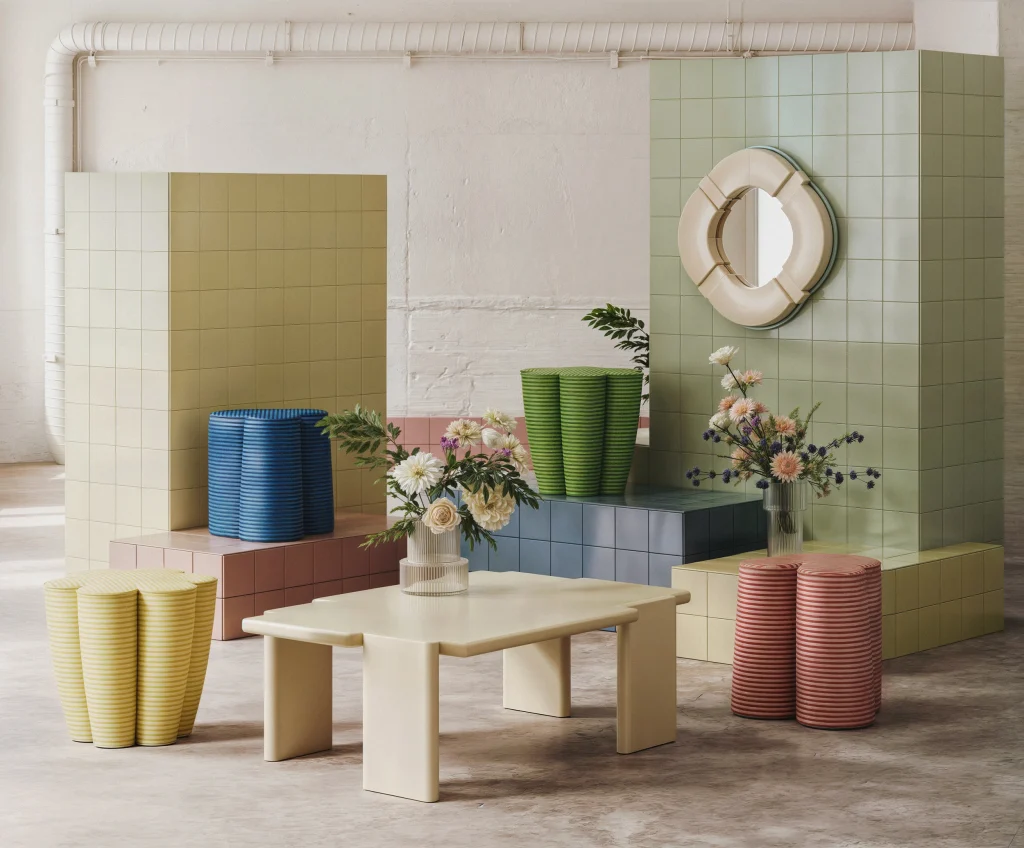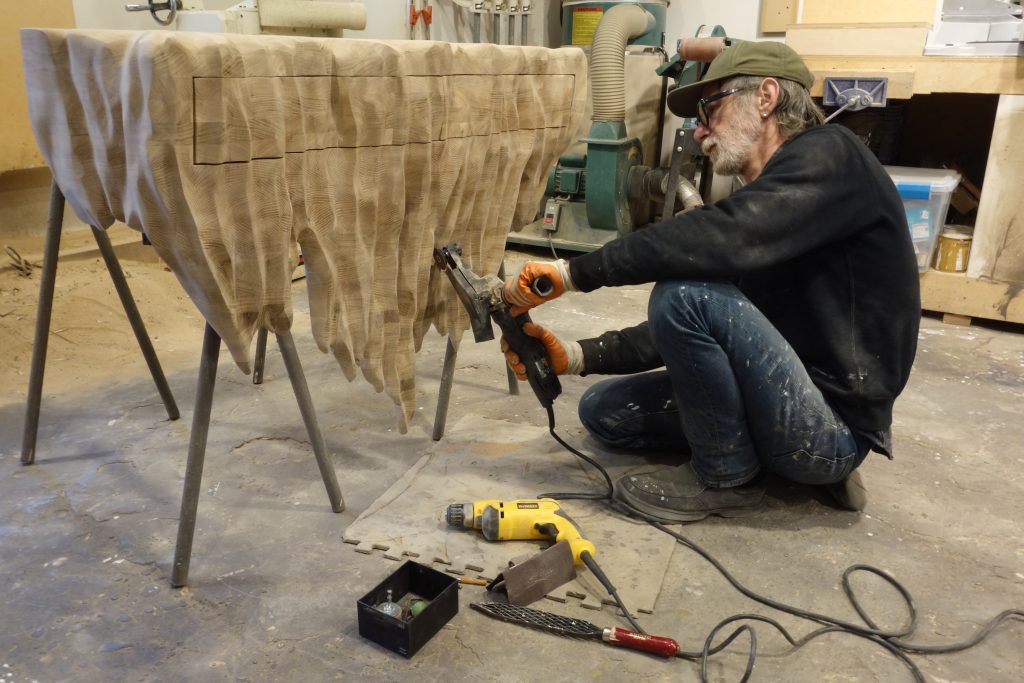
Veera Kulju: A Study of Craftsmanship & Human Curiosity
“Material is ancient as well as the techniques it requires. I’m ignorant or foolish enough to play with that serious, respectful history. I feel guilty about it sometimes, but I just can’t help it,
I’m too curious.”
– Veera Kulju
View Veera Kulju’s work, including “‘Queen of the Dessert’ Sculpture“
“What happens when you use this?” “How does this affect the outcome?” “Is it possible to achieve this?” These are questions which fuel the very human act of curiosity. Questioning how, what, and why has led to astounding discoveries, new approaches, and innovative solutions. This desire to question, hypothesise, test, and determine forms the basis of many different fields – humans are naturally curious about their space in and experience of the world. Here, we find an artist who is incredibly curious about her craft, using her practice, materials, and techniques to carve out an artistic language and sense of individuality. So, how do we define individuality? What makes use curious about the world around us? How do these ideas come together in craft?
Within the world of art and design, individuality in craft speaks to the ways in which an artist explores their chosen material, innovates traditional techniques, and defines or defies how we understand their medium. Within the Finnish design scene, we find designers who reinterpret their natural environment and design heritage through paradoxical expression and new dialogues. Pervading this discourse are questions of how to approach contemporary craft and collectable design; how to address environmental, social, and economic issues; how to portray an artistic individuality within the larger than life history of Nordic design.
Through a study of natural elements and a curiosity for experimental techniques, Finnish artist Veera Kulju investigates functionality, human nature, and the realms of ceramic, textile, and video in her design practice. Her work has a sense of fragility and ephemerality, juxtaposing hard ceramic with delicate, nature-derived forms. She uses unusual materials (most notably, popcorn) and innovative methods to produce incredibly tactile pieces which encourage a consideration of materiality, process, and individual curiosity. Playing both within and against the history of craft, Veera Kulju engages her audience with visually experiential pieces, continually pushing the boundaries of possibility in her chosen field. Here, she gives us insight into her connection to Finnish design, her personal approach to craft, and how experimentation is lead by her own curiosity.
Can you describe how your work connects to your understanding of “authentic” Finnish design?
Crafts, hand-made, heritage, natural materials, nature and ”down to earth”, witty and simple. Those are words that I think of when I think of Finnish material-based, small-scale production design. There is a lot more in the world of design that is not material based and focuses, for example, on solutions or services. Maybe in the core of us there is still the heritage of survival, to build together, and the ability to make things from scratch.
I have a MA degree in design. During my studies, I always tried to find an experimental approach to usability. The path to artistic work has been a learning process of letting go of control and not to be limited by the idea of simplicity and function. Balancing between the juxtaposition of function and expression, design and artistic work, between reason and feeling. I do both.
Photos by Ilkka Kärkkäinen
“I love fairy tales, myths, and imagination, these take us to the world of understanding and empathy. Maybe they are gateways to identity and feelings.”
Photos by Ilkka Kärkkäinen
Are there aspects of your practice which create a connection to an “authentic” Finnish identity? Or the Finnish landscape?
[My work leans] towards nature, forests, [the] primeval. In the harsh conditions, survival has depended on resilience, even stubbornness. Togetherness, melancholy, and kindness. Humor.
Pure Finnish nature has always been a great muse for Finnish creative minds. The nation was re-built after the war with the forest industry. The industrial use of our “green gold” has sadly lead to the decline of the primeval forest which covers just approximately 5% of forest land. We are leaning on the idea of “the untouchable nature”, but, in reality, extinction is a reality, also in our forests. We need to wake up and protect what we still have left of our natural landscape.
“Sounds of Silence”, photos by Ananya Tanttu
Your practice is characterised by experimentation, both technically and through different materials, what inspires you to explore different artistic avenues?
Curiosity. I need to explore. I feel like I’m always just a beginner, pushing myself into situations where I’m trying to solve an impossible equation. Pushing the material into an adventure with me.
I love fairy tales, myths, and imagination, these take us to the world of understanding and empathy. Maybe they are gateways to identity and feelings. I have an aspiration to understand human nature. I try to find ways to become more aware about the unity of everything – the cosmic perspective.


How do these experiments allow you to showcase your practice’s individuality?
I try not to control or define. I believe that when the work genuinely comes from an individuals way of being in the world or seeing the world, then the work is unique. I’m just like any human – complex and feeling. I express my observations through my artistic work, it’s deeply meaningful for me personally. My aim is to find connection by exposing myself. I believe in unity. My heart beats for doing things together, for sharing. At best, it’s like falling in love.
Stills taken from video by Ananya Tanttu
In reference to the “Popcorn” series, how do you expect the audience to react to or experience these pieces?
I would like to give the freedom of interpretation to the audience. The pieces have a meaning for me and I aim to be as true as I can. The responsibility of understanding is on the viewer, as Agnes Martin has stated. I welcome all experiences with great curiosity.
The popcorn is humorous and dark at the same time. If you view the porcelain popcorn piece according to it’s material, it can give inspiration to people: ”Real Popcorn?! Does it get rotten inside, how is it possible?”. It’s possible because someone was crazy enough to try it out.
Generally, in my work, I would like to waken up thoughts of fragility, the natural world, our role in the cosmos, the human touch on the natural world, or nature’s deep meaning and wisdom. The world as we knew it is changing and we are responsible for it. It’s on fire and natures balance is off. We need to wake up and be humble in front of the cycle of life. We are a part of nature, not above it.


“Popcorn Vase”, photo by Katja Hagelstam 

“Popcorn Vase II”, photo by Katja Hagelstam
In which ways do your pieces bring together the traditional and the contemporary?
I respect the traditional knowledge, the skilled makers, the stories and history it holds – heritage creates identity and togetherness. I’m too restless or curious to concentrate on repetition, which is the way to [obtain] amazing skilfulness. I’m always moving, trying to find something. I feel like I’m an absolute beginner in what I do. I’m driven by intuition and feeling, I use the skills I have (and learn new ones) to create objects in real life. I want to learn. I want to question. I want my work to carry a message. I thrive from insights and being in awe. I aim for experiences and unity.
I don’t see a border between tradition and modern, young and old. Everything is.
Material is ancient as well as the techniques it requires. I’m ignorant or foolish enough to play with that serious, respectful history. I feel guilty about it sometimes, but I just can’t help it, I’m too curious.


Bio
Veera Kulju (b. 1975) an artist graduated from the Aalto University works with textiles, ceramics and video. She has showcased her work both in Finland and internationally. She aims to assemble installations characterized by abundant fragility and an atmosphere of permanence and timelessness. Although Kulju’s works encompass conceptual layers created through the materials, the aim is for viewing them to be physically experiential. Through the materiality and artistic idiom of her works, Veera Kulju succeeds in conveying how they feel. Just by looking at the artworks, the viewer feels the differences between matte and glossy, rough and smooth, warm and cold in his fingertips.



















Responses